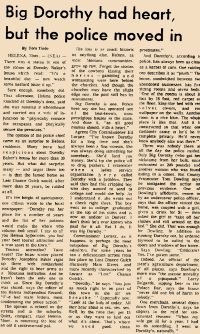|
|

|
Most
of these early photos of the Urban Renewal Program's "walking
mall" and adjacent areas were taken in the mid-1970s by
Virgie Millegan Baird (1921-1999); photos by other contributors
are so noted.
Many Helenans who are old enough to remember downtown when an
actual street ran through it still resent the mall and the destruction
of landmark buildings that took place.
|
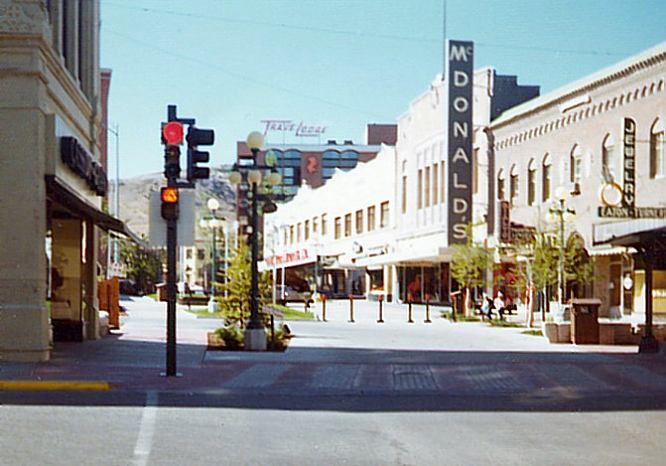
|
Prominent
here is the J. M. McDonald Company, a Nebraska-based chain department
store which operated in Helena in the 60s-70s. In this photo,
the "modern" gray aluminum paneling that McDonald's
placed over the original building façade has been removed.
This 1929 building originally housed Fligelman's department
store, where noted Helena artist Robert Morgan once dressed
the display windows.
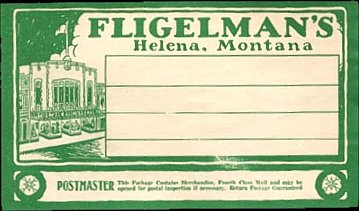
On
the right-hand side of the photo is Eaton-Turner Jewelry,
which for many years featured in its window a series of the
delightful Baranger
Motions mechanized animated advertising displays.
The TraveLodge
Hotel, also seen in the above photo, has changed ownership several
times, operating as the Holiday Inn Downtown, then as the Park
Plaza Hotel. It was renovated in 2000, but as of August 2006
the hotel's nightclub was shuttered and the future of the enterprise
was uncertain.
|
|
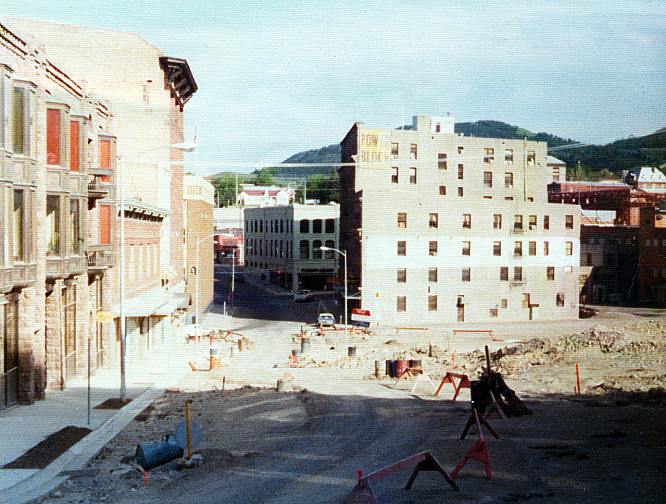
Destruction on
6th Avenue.
|
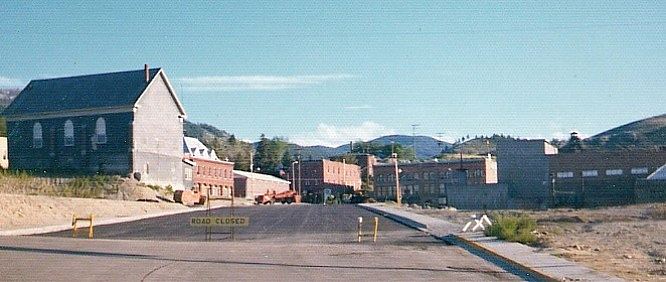
| Construction
of Cruse Ave. Grand St. once crossed here. The building on the
left once served as the Methodist Episcopal Church. |
|
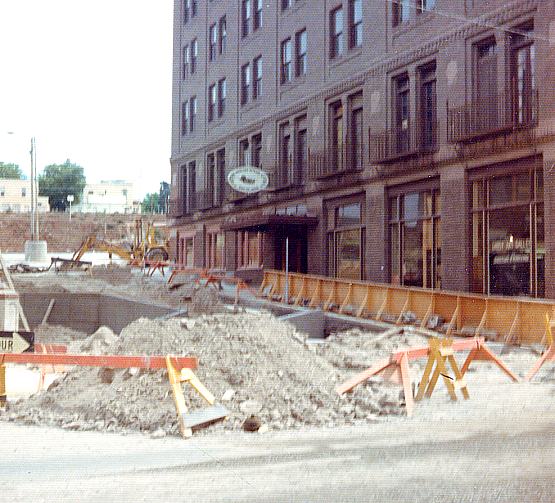
|
Construction
on what was once Grand St., at Last Chance Gulch. The 1913 Placer
Hotel is on the right.
|
|
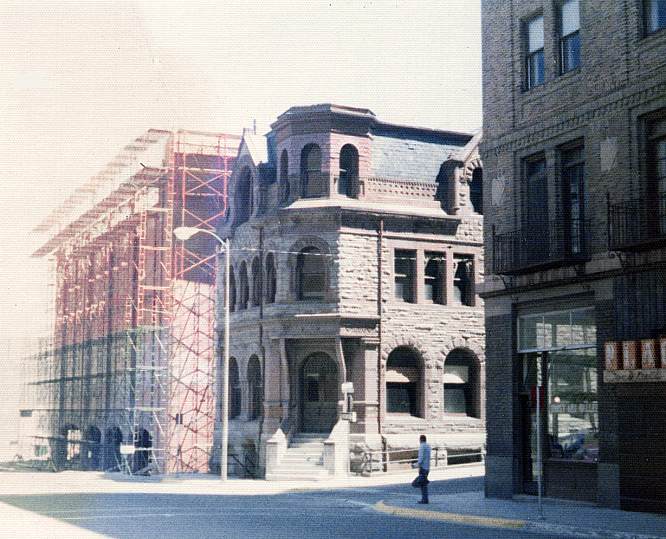
The Arcade Building
under construction.
|
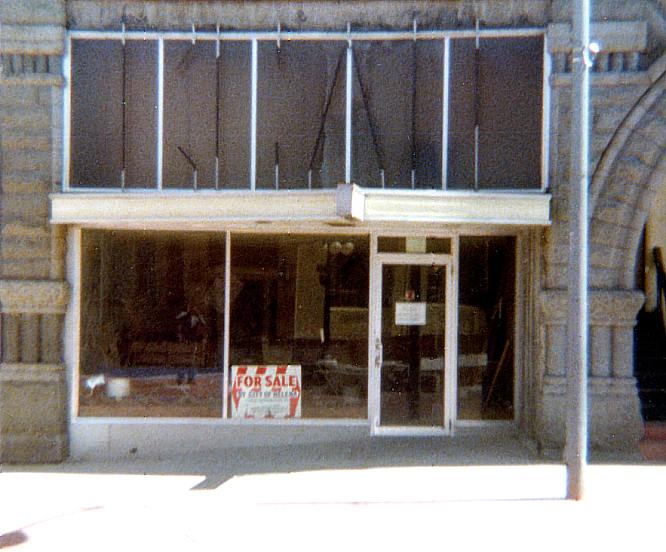
| Vacant storefront
in the Atlas Block. This space was once the studios of KCAP radio.
Above the door can be seen the ghost of the KCAP sign. |
|
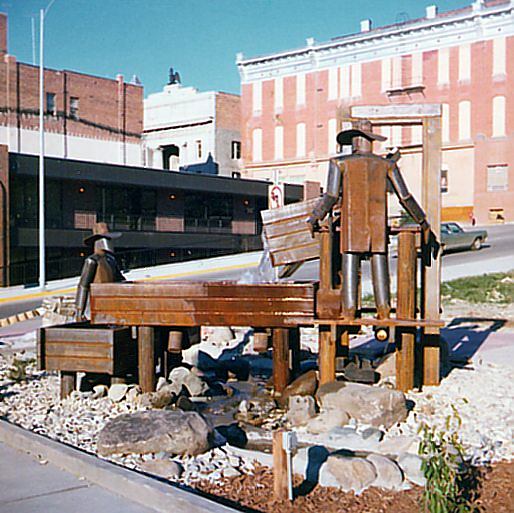
| The hideous
prospectors sculpture, Last Chance Gulch at Broadway. In
the background are the columned 1915 Consistory Temple and the
1885 Masonic Temple, which has been the home of State Publishing
for many years. |
|

DOROTHY'S ROOMS
A FAMOUS SPORTING HOUSE
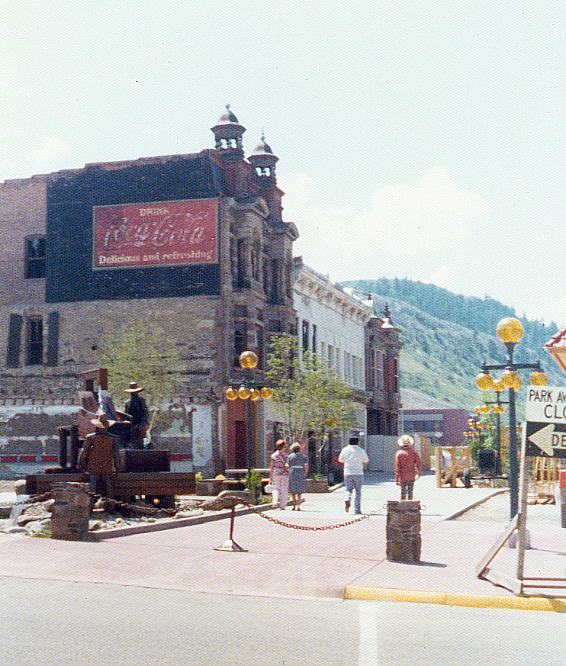
|
|
|
The
white two-story building sandwiched between the Novelty and
Boston Blocks was Dorothy's Rooms, for many years a popular
bordello. Dorothy Jospehine Baker
took over the 19-1/2 South Main location in the mid-1950s from
Ida Levy, who had operated there for decades.
Levy, probably a native of New Jersey,
was busted by G-Men for alcohol violations during Prohibition
(1920-1933), but stayed in business. Baker took over around
1955, and through the years garnered public praise for the cleanliness
and honesty of her operation.
|
|
|
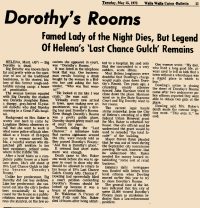
Two
1973 newspaper stories about Dorothy Baker. "Big Dorothy
had heart" talks about community support for the operation.
"Dorothy's Rooms" gives information about Dorothy's
death, and the final days of her business.
CLICK TO ENLARGE
|
|
|
INTERIOR PHOTOS OF DOROTHY'S ROOMS, 1973
|
The following
photos of the interior of "Big Dorothy's" are from
the collection of Wally Peel, who took them after the death
of Dorothy Baker in 1973, just prior to the public auction of
her belongings.
As Wally tells it...
"
When Big Dorothy passed away in 1973, her family decided to
auction her belongings off. My friend Jack Hargrove was hired
to do the job. One evening he and I went up there to see all
the items he would be selling. I brought a camera and took some
photos. I would not claim that these are the only pictures ever
taken there, but I would venture to say they are at the very
least quite rare. These are interior photos of her establishment
exactly as it was when they closed her down."
|
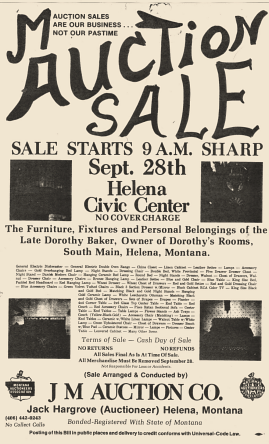
Auction flyer,
1973.
COURTESY
OF WALLY PEEL
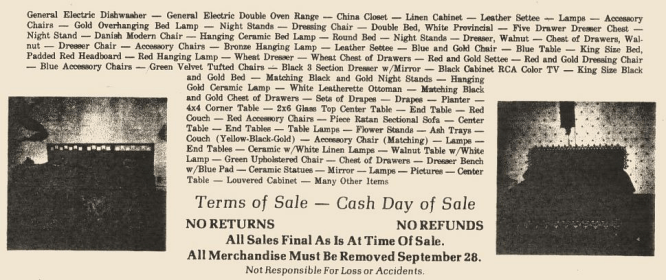
Auction flyer, 1973 (detail)
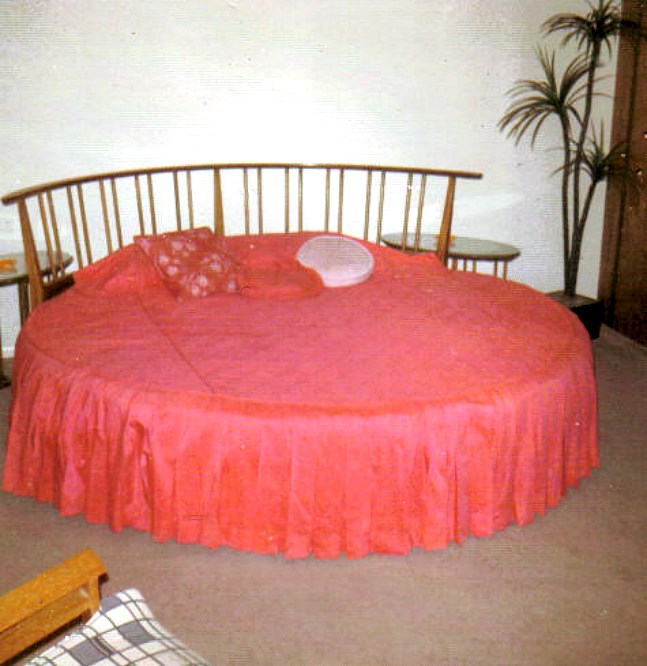
The fabled round
bed. Hugh Hefner had nothing on Dorothy.
COURTESY OF WALLY PEEL
A FORMER PATRON OF DOROTHY'S REMEMBERS...
|
"Thank
goodness walls can't talk. But they do speak, in these wonderful
photos, since Dorothy had a gift for a certain mobile home motif
of interior decorating that created the feeling of wandering
through the prop rooms in the Old Brewery Theater.
"The
place was a maze of cheap furniture, space-age lamps, wall paper
with sprinkles, gilded mirrors in unusual locations, and, of
course, the slightly "off" ladies, who scampered about
on high-heeled slippers with pompoms on the toes. The round
bed looks all too familiar, in a deeply burning kind of way.
But those rooms were a local boy's rite of passage, at least
for those of us who did not stay home Friday nights to practice
the bassoon.
"The
experience was a tad expensive if a lad was stacking hay at
a nickle a bale, but we paid up and blessed Dorothy in our most
secret hearts for what love she had to offer."
Ralph Beer
|
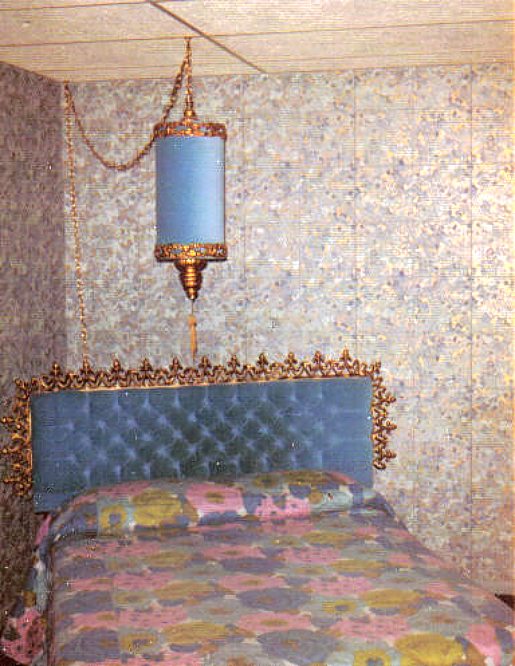
Shades of blue
made this room a cool oasis.
COURTESY OF WALLY PEEL
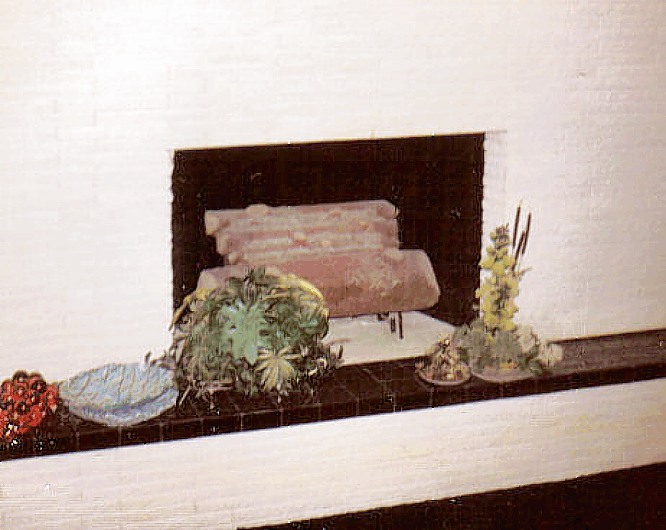
A gas fireplace
added a warming glow.
COURTESY OF WALLY PEEL
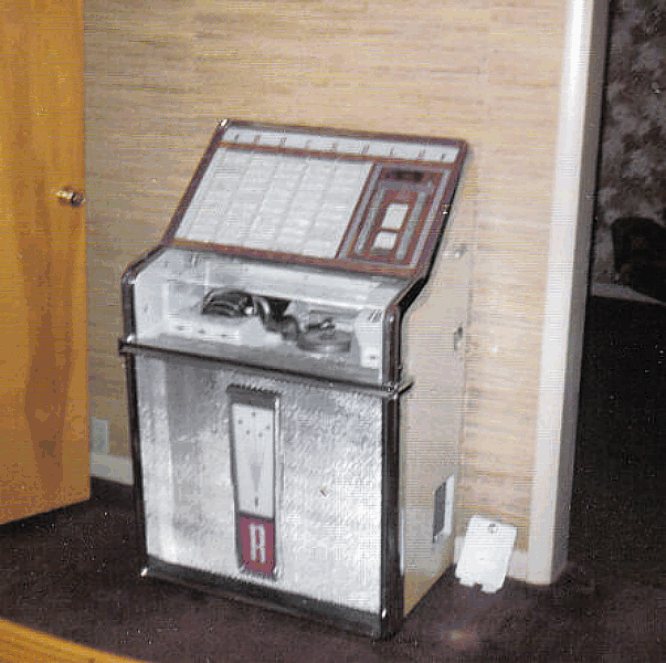
| Dorothy's
Rock-Ola jukebox. "I Wish I could remember
the songs that were on it. Some of the titles were pretty funny,
given the circumstances."
-- Wally Peel |
COURTESY
OF WALLY PEEL
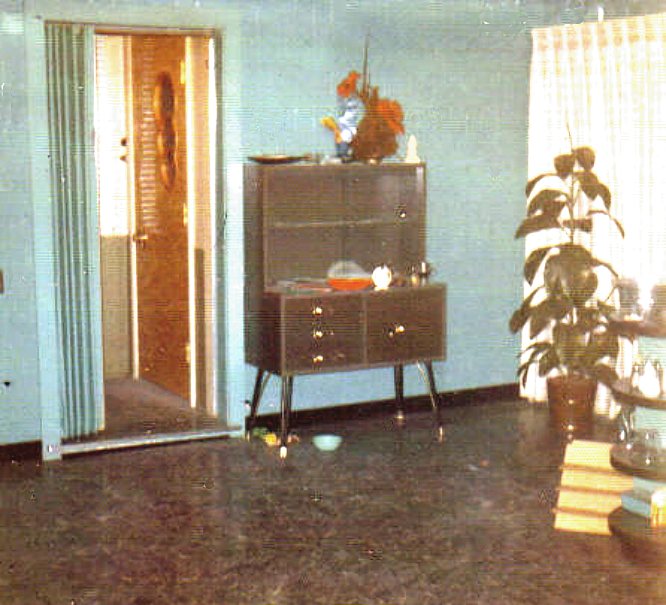
Probably a common
area of the establishment.
COURTESY
OF WALLY PEEL
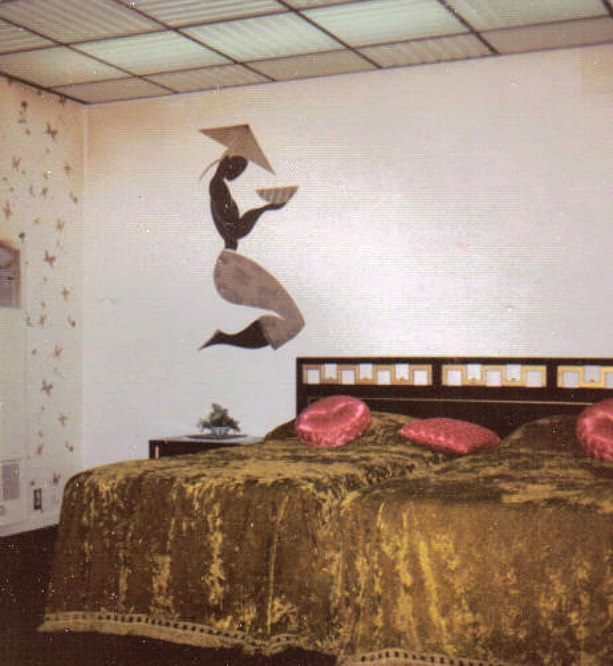
Oriental charm,
with a suspended back-lit ceiling.
COURTESY
OF WALLY PEEL
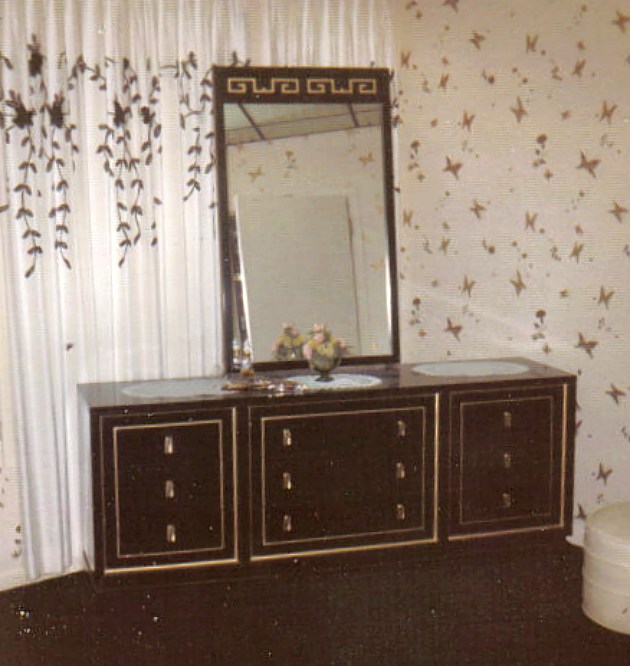
Dresser in the
oriental room.
COURTESY
OF WALLY PEEL
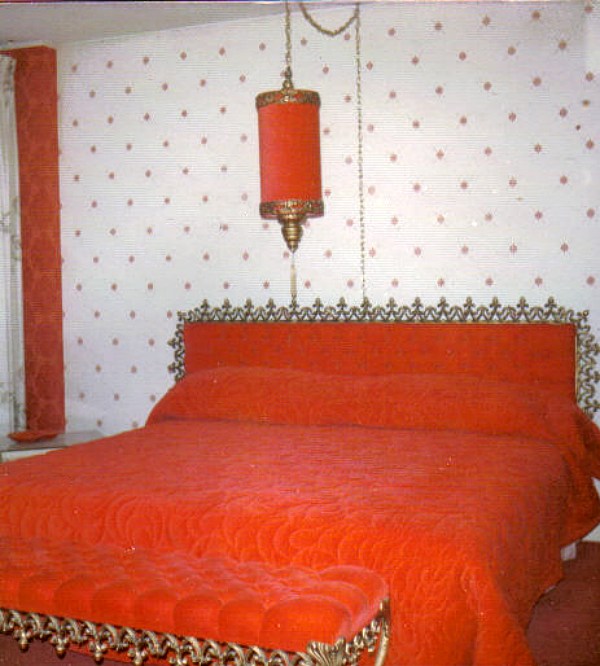
The decor of
this room had the feel of a Valentine's Day card
COURTESY
OF WALLY PEEL
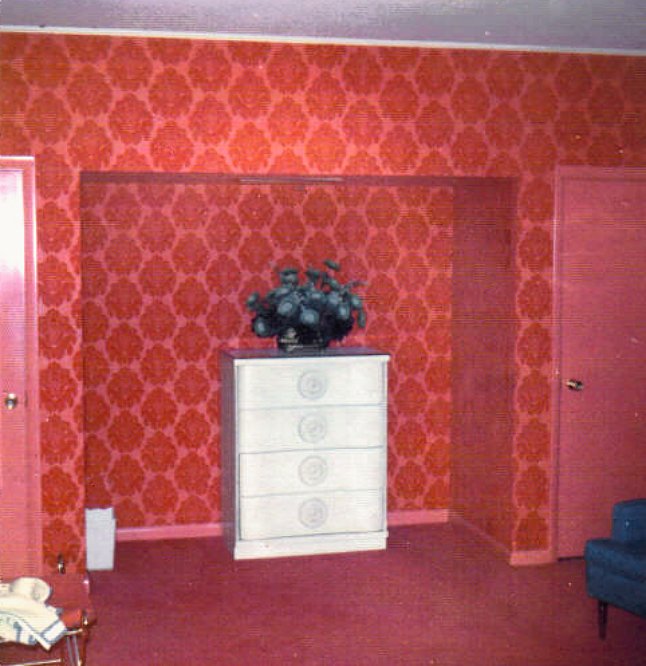
Red flocked wallpaper
-- a bordello classic.
COURTESY
OF WALLY PEEL
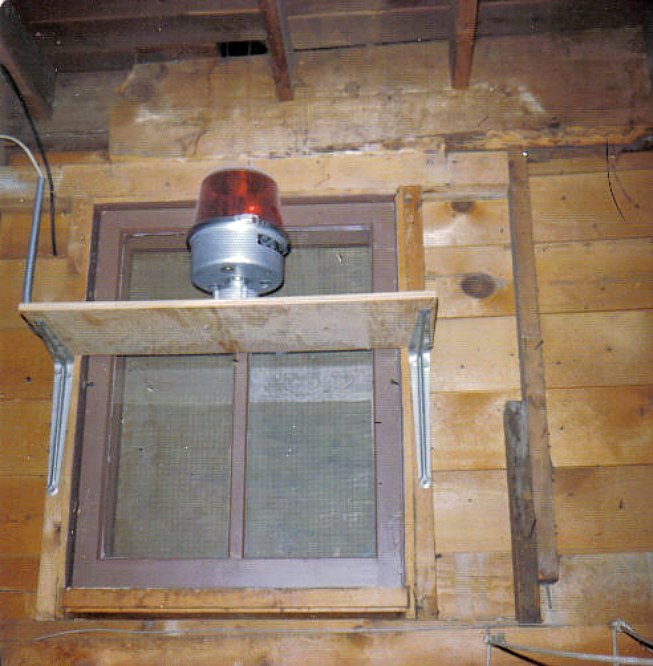
COURTESY
OF WALLY PEEL
Dorothy's Alarm
Light. Wally Peel explains...
| "This
light was mounted on a shelf in a small space just off what I
was told was a sitting room Where her customers waited. By the
door to that space there was a light switch. When Dorothy had
trouble with a customer, she would turn the switch on, and the
red light would start flashing, sending a beam out into the alley,
signaling that she needed help. Since the light was in another
room, customers had no idea help was on the way. The light looks
familiar. Where did she get it? You tell me." |
Many thanks
to Mr. Peel for sharing these rare images!

|
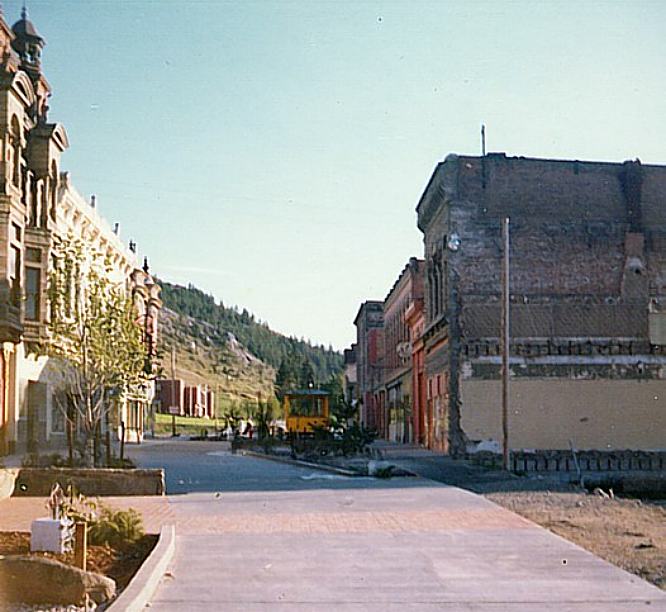
|
Walking
mall, looking south from near Broadway.
|
|
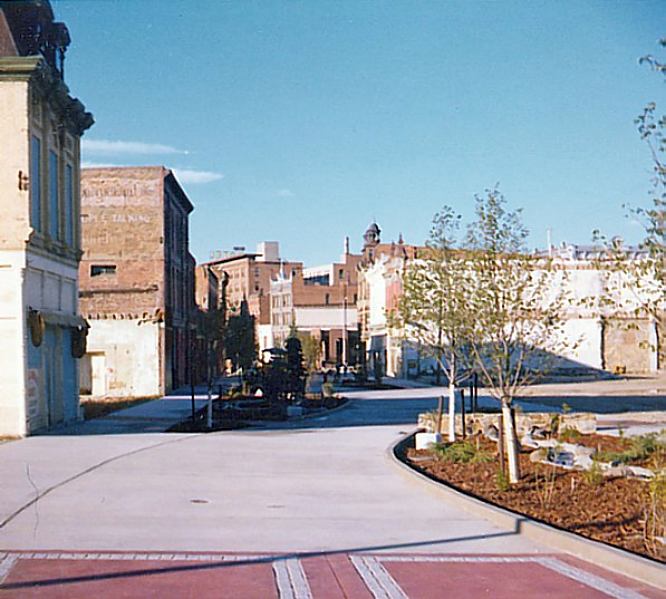
Walking mall,
looking north from the 1888 Colwell Building, on the left.
|
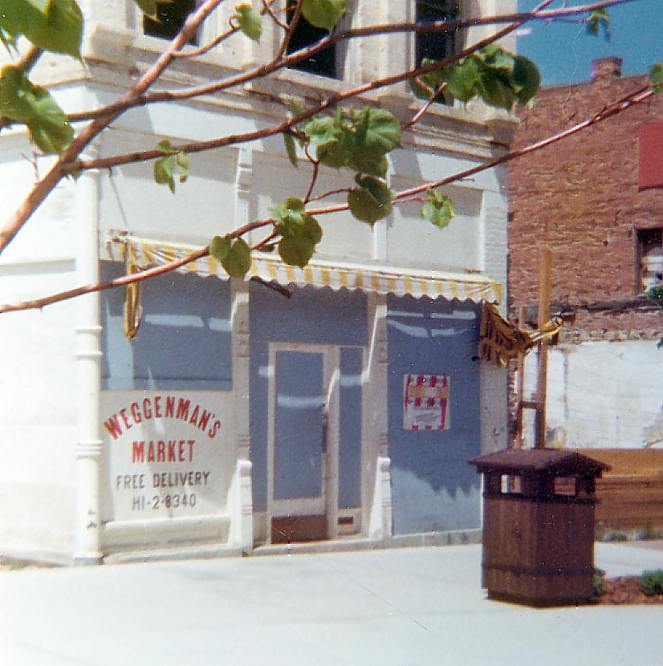
Vacant storefront
in the Colwell Building. Weggenman's Market occupied this space for
decades.
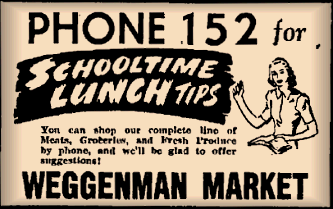
|
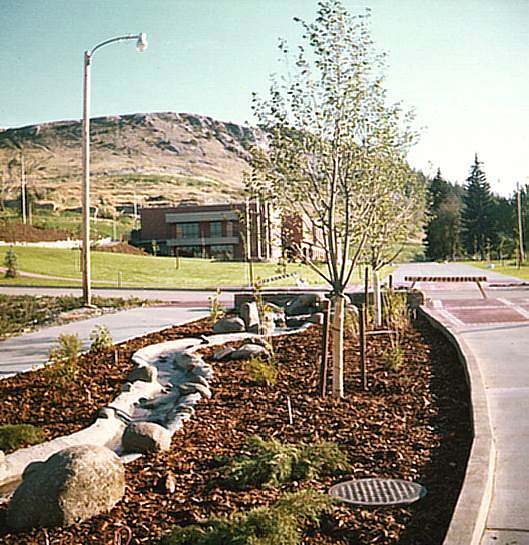
Landscaping on
the southern end of the mall.
|
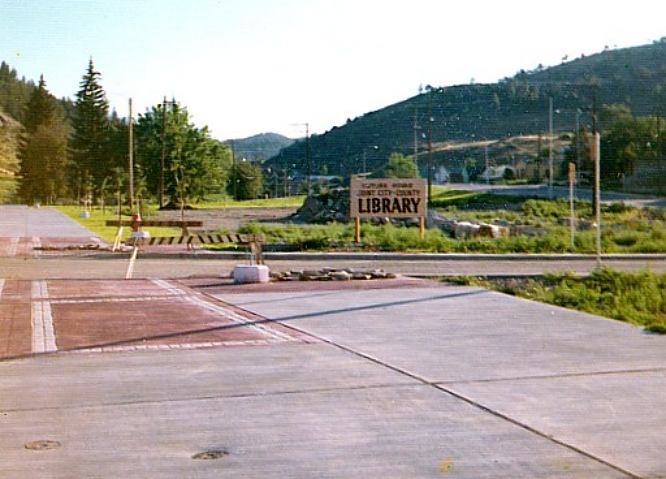
|
Looking
south at the future site of the City-County Library and, further
on, the site of the new (now the old) Federal Building.
|
|
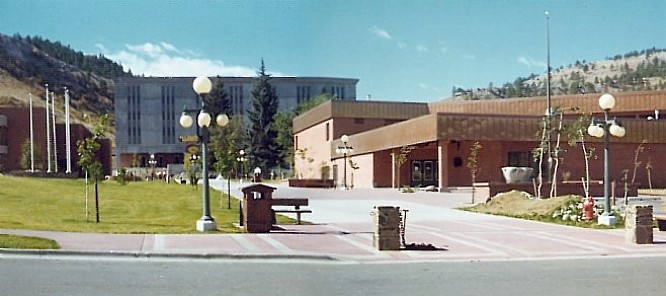
|
The
same scene a few years later. Notice how the fortress-like Federal
Building and the ultra-bland library spoiled a perfectly nice
view. The new lampposts are similar in design to those used
in Helena during the1920s.
|
|
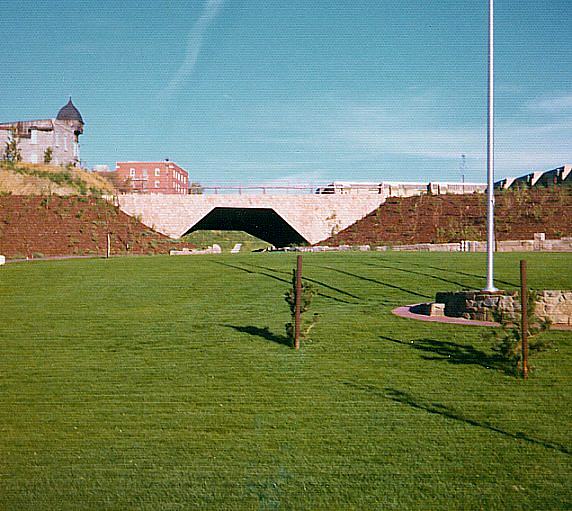
Looking east,
Cruse Ave. pedestrian underpass. Prominent on the left is the 1889
Bluestone House.
|
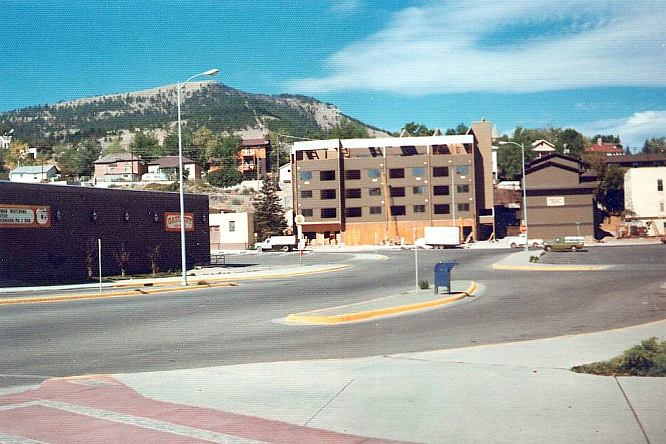
|
Looking
west on Broadway from the mall. The Gaslight Cinema is on the
left.
|

|











